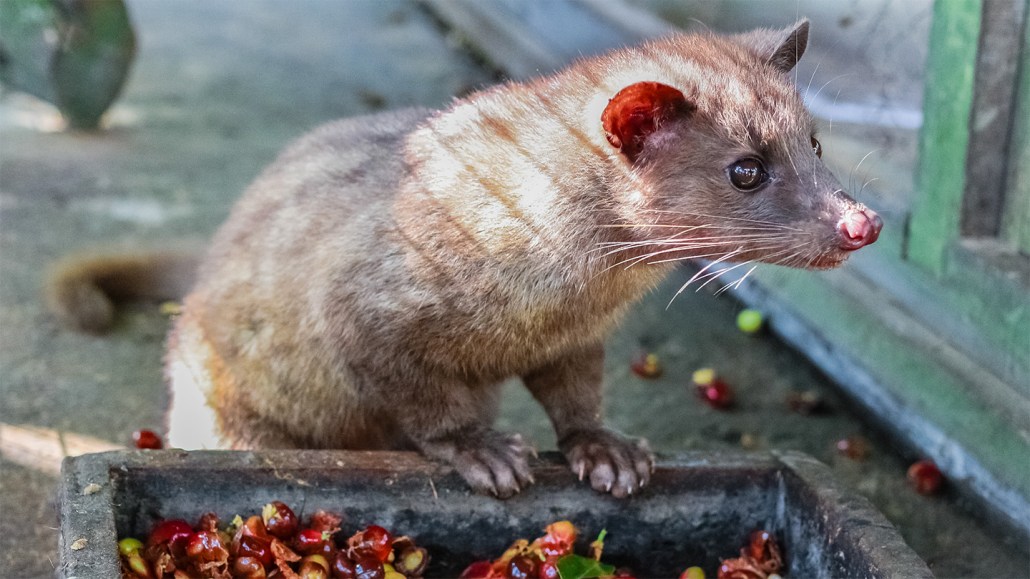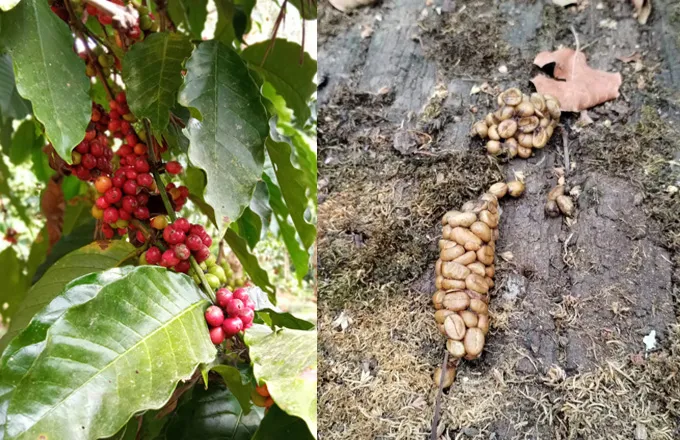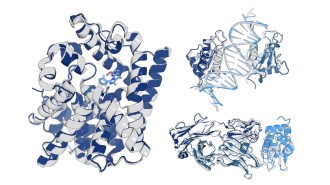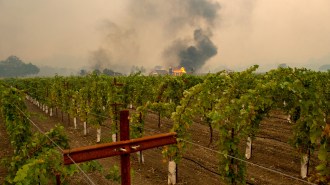Coffee beans pooped out by civets really are tastier. Here’s why
Chemistry explains what sets civet coffee apart from other beans

An Asian palm civet prepares to dine on unroasted coffee beans.
AKKHARAT JARUSILAWONG/Getty Images
The world’s most prized coffee comes from partially digested beans pooped out by the Asian palm civet. Now, researchers are delving into why this “civet coffee” is so tasty.
New chemical analyses of beans collected from civet poop, alongside beans picked directly from the coffee plants, suggest that fermentation in the civet’s innards does add a little something extra to the coffee’s flavor, including amping up the fat content and the concentrations of certain aromatic compounds. These alterations help create civet coffee’s unique taste profile, researchers report October 23 in Scientific Reports.
Asian palm civets (Paradoxurus hermaphroditus) are catlike mammals found from India to Indonesia that love fruit — including ripened coffee beans. As the beans pass through their digestive system, the civets absorb the pulp and deposit the worked-over beans in their dung.

The resulting coffee is so prized that the beans may cost $600 to $1,300 a pound — a price tag that has led to concerns about civet captivity and animal welfare in some civet coffee farms.
Meanwhile, questions linger about whether civet coffee is truly chemically distinct. Previous studies suggested that the fermenting genius behind the flavor may be Gluconobacter, a bacteria genus found in civets’ feces, but not that of other animals. But what happens during that fermentation is still uncertain.
Zoologist Ramit Mitra, then at the Central University of Kerala in India, and colleagues turned to Kodagu in southern India, a coffee-producing district of Robusta beans also home to wild palm civets. The team collected 68 fecal matter samples from wild civets on estates in India growing Robusta, as well as uneaten coffee beans from the same estates.
The civet-consumed beans had higher fat content and also higher levels of two fatty acid methyl esters: caprylic acid methyl ester and capric acid methyl ester. Fat, the team notes, can have a big impact on coffee’s aroma and overall taste profile, and the fatty acids could also add a dairylike flavor. The civet beans also had lower levels of protein and caffeine relative to uneaten beans, which could explain the coffee’s low bitterness compared with other beans.
The findings confirm that civet coffee has a unique chemistry — but take these specific flavor notes with a grain of salt, the team cautions. These analyses were performed on unroasted beans; roasting can tweak to a coffee’s flavor by altering acidity and the concentrations of other chemical parameters. Furthermore, the vast majority of civet coffee grounds are produced with a different bean, Arabica.






